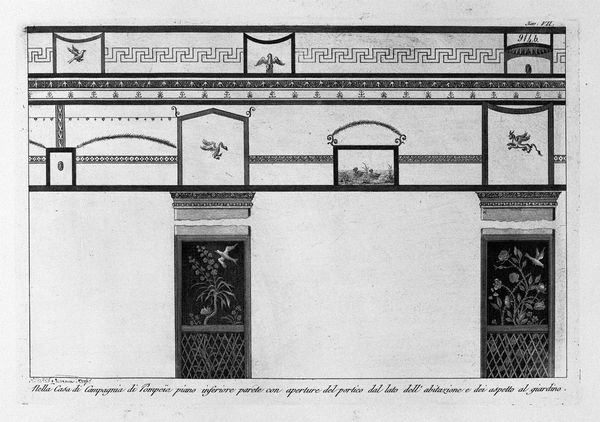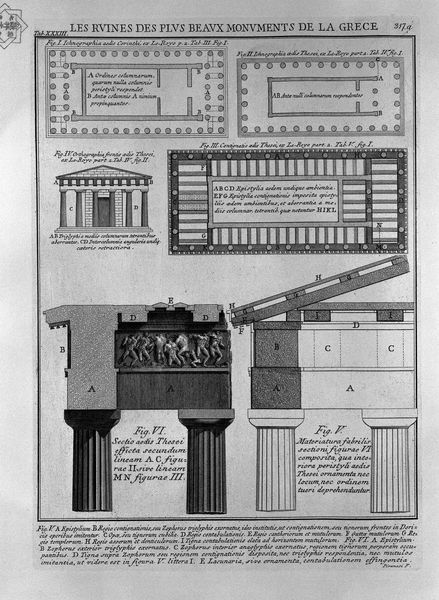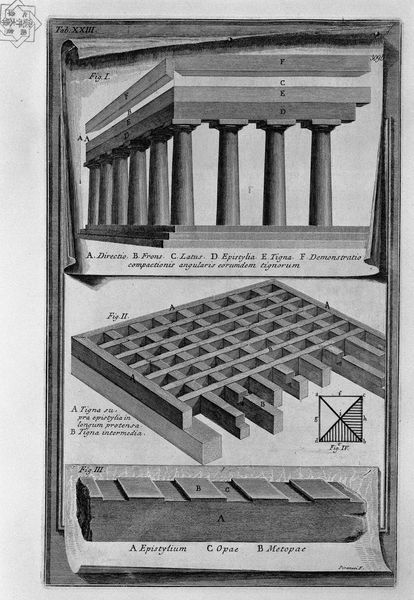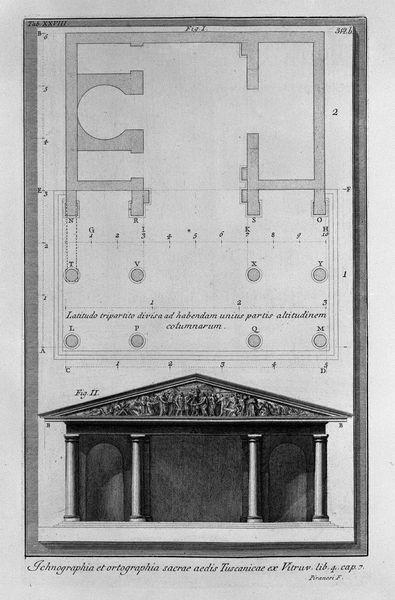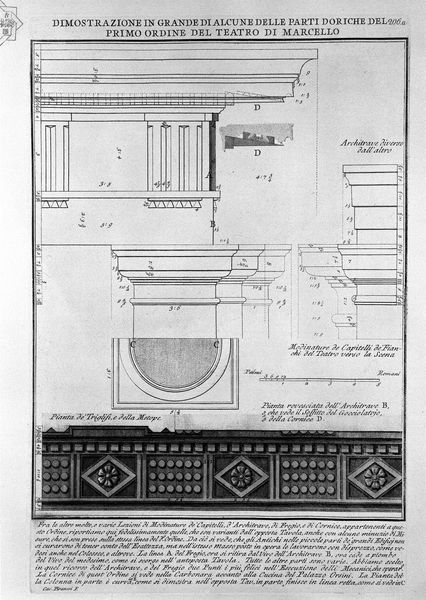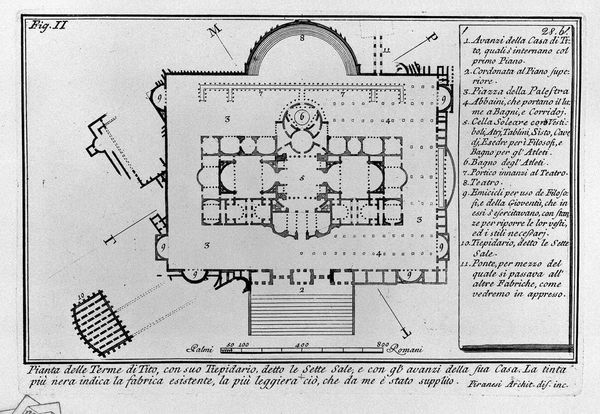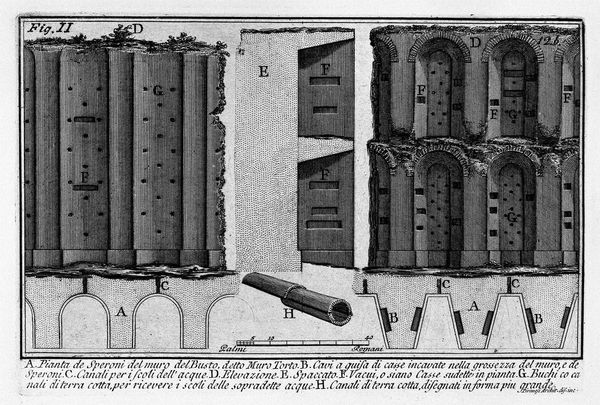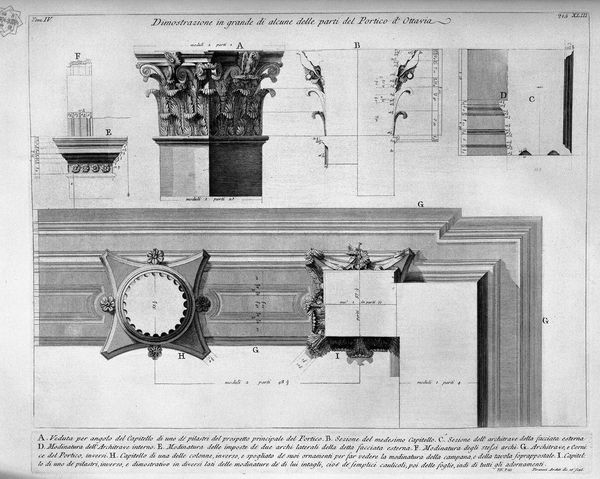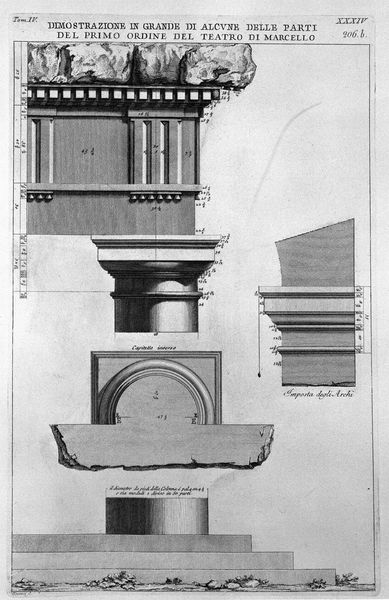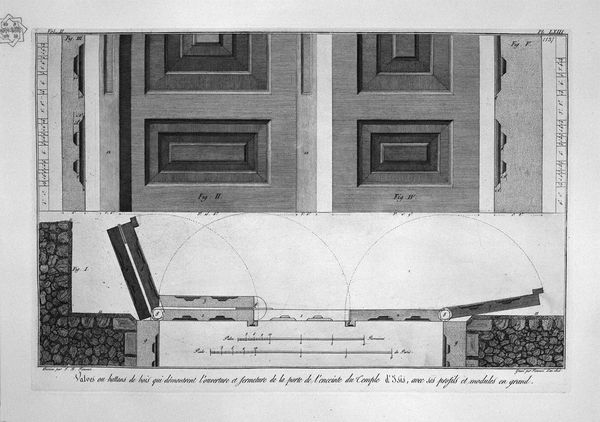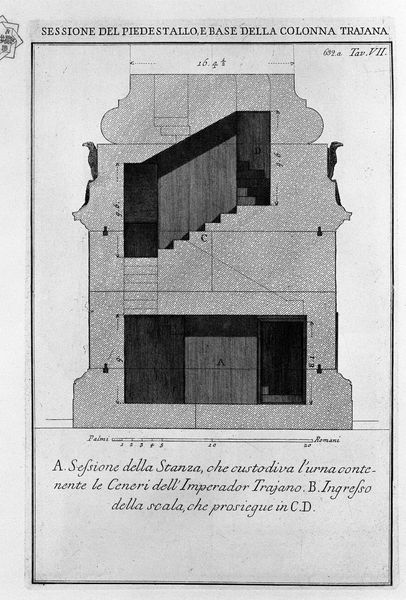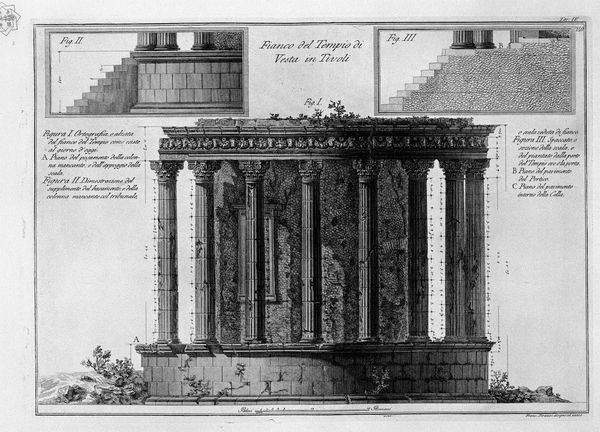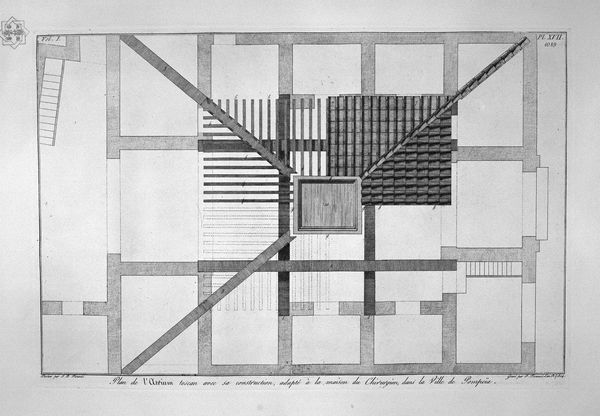
Side and gable of the Temple Tuscany (by Vitruvius, second Perrault)
drawing, print, engraving, architecture
architectural sketch
drawing
architectural design
architectural form
text
geometric
ancient-mediterranean
architectural drawing
line
architecture drawing
engraving
architecture
Copyright: Public domain
This engraving of the side and gable of the Temple Tuscany, after Vitruvius, was made by Giovanni Battista Piranesi. In the 18th century, architects were fascinated by classical forms, looking to them as models of reason, order, and proportion. Piranesi’s detailed rendering emphasizes the geometry and mathematical precision believed to underpin the ancient world. But we might also consider this image in relation to power and knowledge. Architectural drawings like this one were not simply neutral records, but tools used to legitimize certain building styles and cultural values. The classical aesthetic, with its emphasis on symmetry and grandeur, was often associated with elite status and imperial authority. Piranesi himself was deeply invested in promoting Rome as the pinnacle of civilization through his vedute and architectural fantasies. What does it mean to take these forms and replicate them? This act of translation across time and culture invites us to consider whose stories are being told, and whose are being left out. This image invites us to think critically about how architecture shapes our understanding of history, identity, and power.
Comments
No comments
Be the first to comment and join the conversation on the ultimate creative platform.
